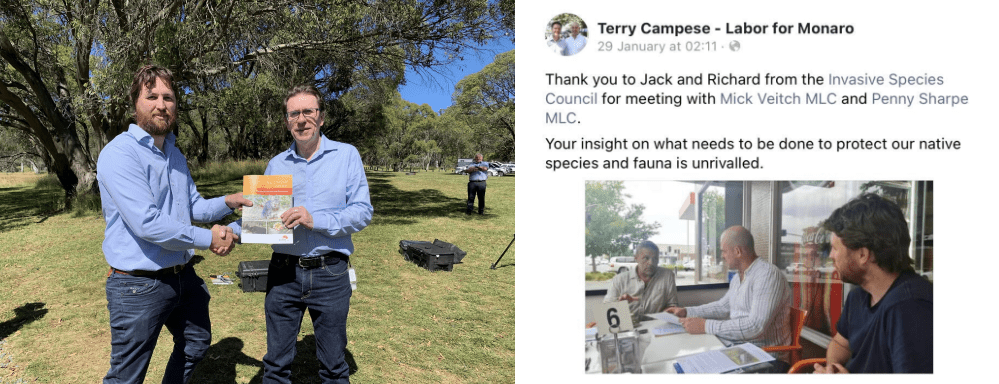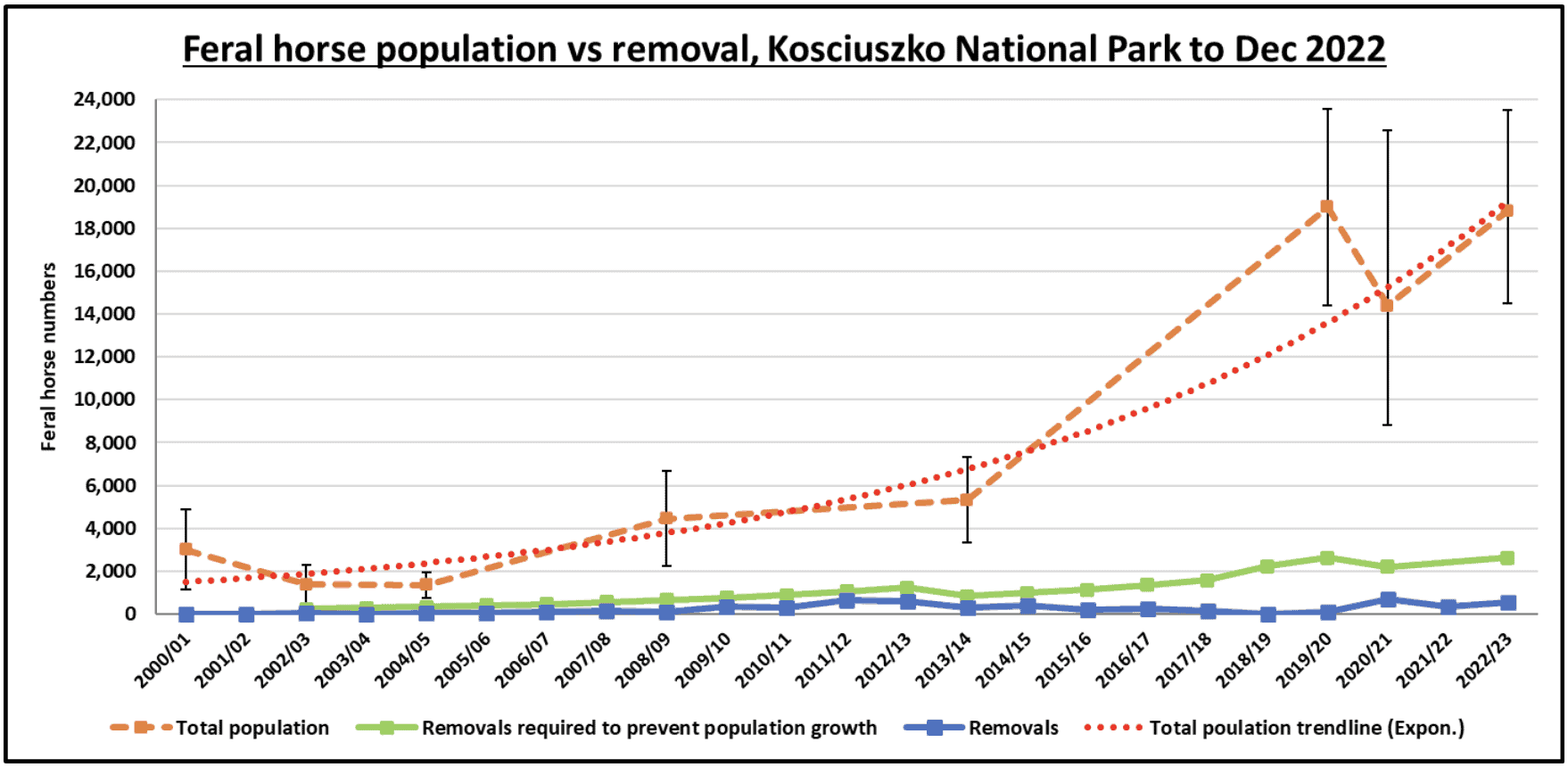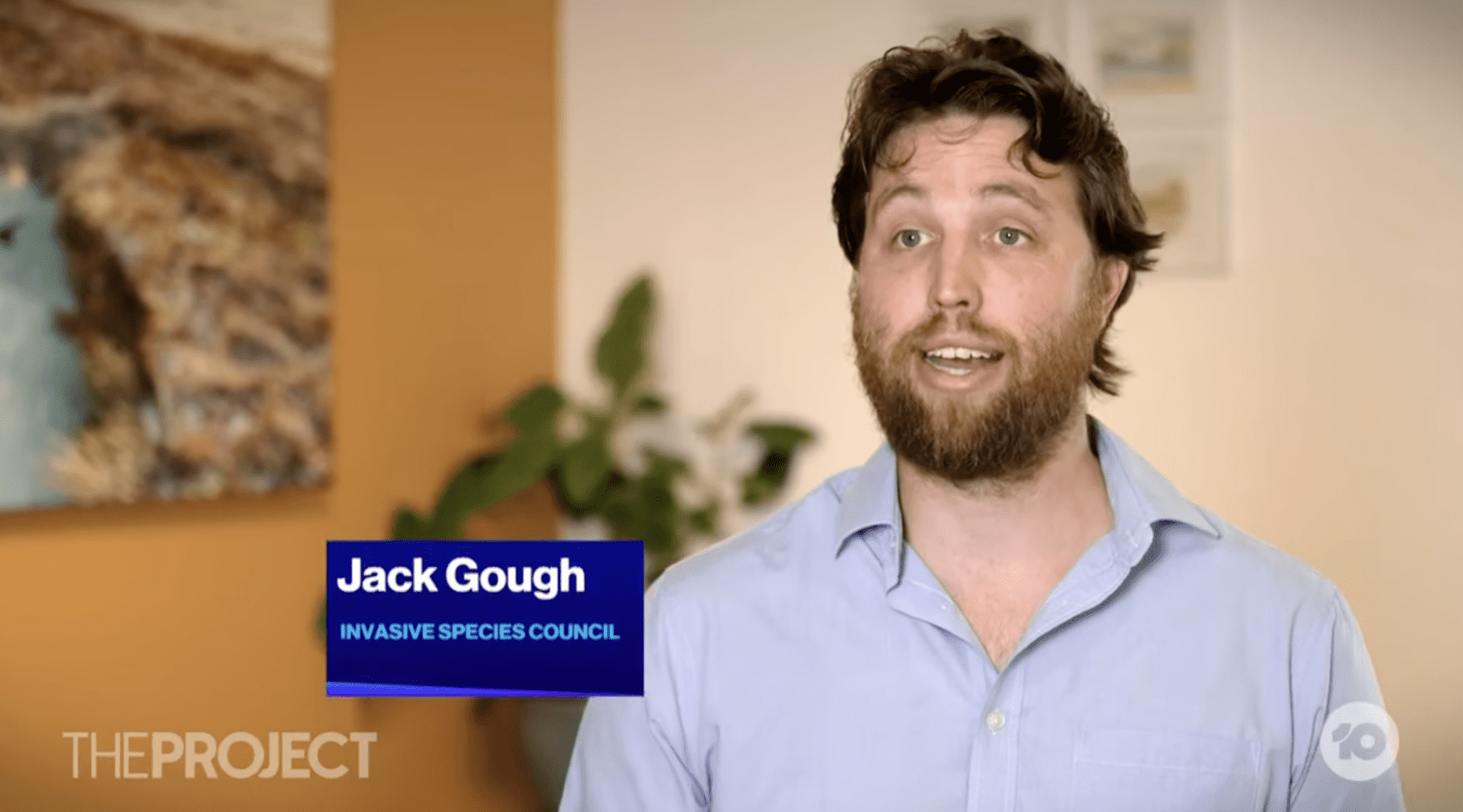With the NSW election just weeks away, where do the major parties stand on ensuring funding and policies to manage feral horses, deer, weeds, cats and other invasive species are top priorities for NSW? We’ll keep working until the last moment, but here are highlights from our work on the ground as of 8 March.
- As we meet with scores of NSW MPs and candidates, engaging them on invasive species and urging them to take on critical actions detailed in our invasive species policy document, hundreds of supporters have been sending in personal, heart-felt messages and emails to NSW election candidates in almost every electorate.
MPs have been responding and we are seeing growing support for our priorities. You can send your own email here.
The NSW Greens have said that they support all of our election policy recommendations. Take a look at their letter to us outlining their position.
NSW Labor and the Coalition have assured us they will provide detailed responses soon and we will let you know what they say.
Wagga Wagga independent MP Dr Joe McGirr announced the removal of feral horses from Kosciuszko National Park and the repeal of the Bill to protect feral horses, as well as feral pig and feral deer coordinators, will be priorities for him if elected and will influence his support if he has a say in which major party holds power after March. You can see coverage of this in the Sydney Morning Herald and on the ABC.
Our work raising the profile of this issue has seen the Premier, the Deputy Premier, the Labor Opposition Leader, the Environment and shadow Environment Ministers, and multiple Liberal and National candidates all asked by the media for their position on feral horses. In all cases they have confirmed that getting the numbers down is a priority. The issue was also a hot topic at the recent Environment Leaders Debate hosted by the Nature Conservation Council. You can watch what each party had to say here. - The alarming news that feral horse numbers in Kosciuszko National Park have jumped by over 30% in just two years to almost 19,000 caused a media frenzy last month. This catapulted the issue into the spotlight, including a front-page story in the Sydney Morning Herald’s News Review with an excellent article about the ‘feral invasion’ threatening our national parks and the need for all parties to commit to greater funding and action for invasive species.
You can read our media release on the jump in numbers and coverage in the ABC, the Sydney Morning Herald, the Guardian, the Daily Telegraph and The Land.
- Did you know that New South Wales and Western Australia actually prevent local councils from introducing sensible pet containment policies to protect wildlife? We are seeking to change this law in NSW and, in the lead up to the election, we have teamed up with WIRES, Birdlife Australia, the Nature Conservation Council and the Australian Wildlife Society to advocate for this.
- ACT Senator David Pocock has successfully launched a federal Senate inquiry into the issue of feral horses in the Australian Alps. You can read the Terms of Reference here. For our take on the inquiry, read our media release or check out the resulting media coverage on The Project, in the Sydney Morning Herald and the ABC.

- Environment Minister Tanya Plibersek has backed this Senate inquiry and told the ABC:
“I love horses but they don’t belong in Kosciuszko National Park. Feral horses … are damaging fragile alpine and subalpine ecosystems and important plant and animal species, such as the iconic corroboree frog. I welcome this inquiry to ensure that we are doing everything we can to effectively manage this precious ecosystem from the impacts of feral animals, such as feral horses.”
The inquiry will be conducted by the Senate Standing Committee on Environment and Communications and is due to report by 9 June 2023 with submissions open until 11 April. The terms of reference include investigation of relevant Commonwealth powers and responsibilities, best practice approaches to reduce the populations of feral horses and the adequacy of state and territory laws, policies, programs and funding. The focus is deliberately not on the impacts, but what is needed to actually reduce the population.
We are seeking detailed submissions from the community and experts and will be in touch soon with ways you can assist. - We wrote to Minister Plibersek seeking her intervention on the feral horse issue and inviting her to visit Kosciuszko National Park. We are awaiting a response. We outlined four ways that she could take action:
- Develop regulations under the Environment Protection and Biodiversity Conservation (EPBC) Act requiring states and territories to effectively manage feral horses (and other invasive species) in the Australian Alps under national heritage management principles.
- Develop a national feral horse threat abatement plan
- Invest in feral horse management in the Australian Alps, a priority place under the national Threatened Species Action Plan.
- Address any barriers to federal intervention through the EPBC Act reforms.
Take action
Since launching our election writing kit, MPs have let us know they are receiving your emails. This is translating into political support for our priorities. This shows how successful a genuine email can be in catching the attention of candidates.
If you live in NSW and haven’t emailed your candidates, please get your writing kit today. After submitting the form you will receive an email that contains the email addresses of candidates for your local NSW electorate and details of exactly how to send them a message.
With your help we can keep up the momentum and ensure invasive species are a top priority at the NSW election on 25 March.



